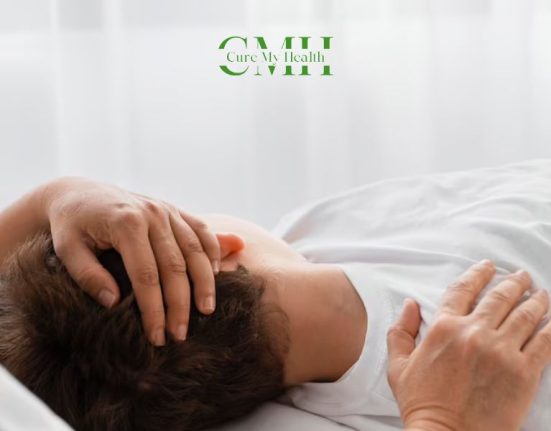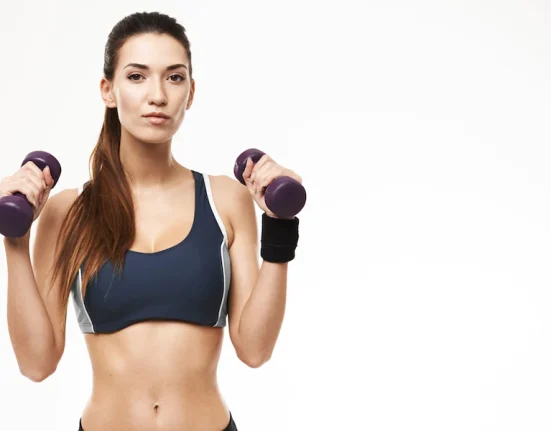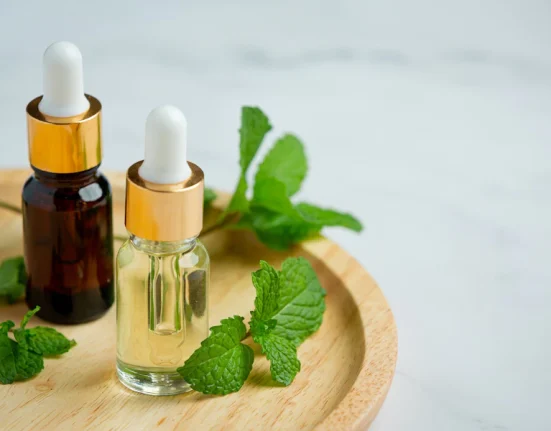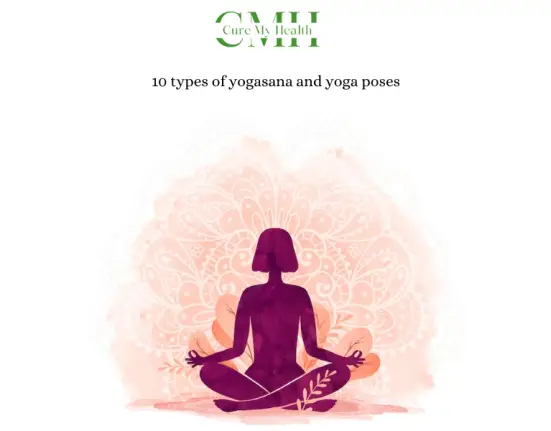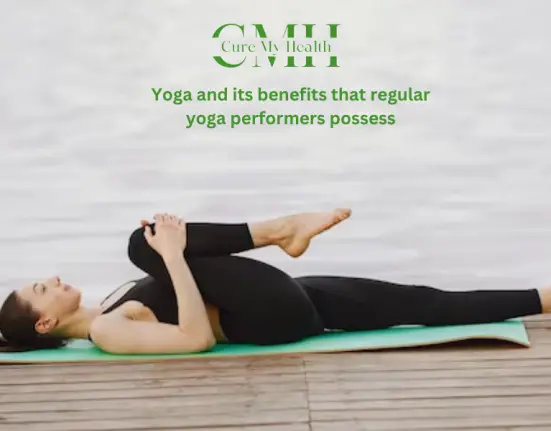Introduction
Pranayama is a Sanskrit word that translates to “control of breath.” It is an ancient practice from India that involves regulating the breath through various techniques.
In traditional yoga practice, pranayama is one of the eight limbs of yoga, and it is considered an essential part of the yogic journey towards achieving inner peace, focus, and spiritual awakening. Pranayama is believed to improve the flow of prana or life force energy through the body, which is said to promote physical, mental, and spiritual wellbeing.
There are various types of pranayama techniques, each with its unique benefits and purposes. Some common techniques include deep breathing, alternate nostril breathing, and kapalbhati.
Practising pranayama is said to have many benefits, including reducing stress and anxiety, improving lung function, boosting the immune system, and increasing mental clarity and focus. However, it is important to learn and practise pranayama techniques under the guidance of a qualified yoga teacher to ensure safety and effectiveness.Pranayama is a yogic practice that involves controlling and regulating the breath to enhance physical, mental, and spiritual well-being.
12 must know types of pranayama along with guiding tips.
There are several types of pranayama, each with its own unique benefits. Here are 12 types of pranayama:
1. Nadi Shodhana Pranayama (Alternate Nostril Breathing):
Nadi Shodhana Pranayama, also known as Alternate Nostril Breathing, is a popular pranayama technique in yoga. It is designed to balance and purify the body’s energy channels or nadis.
To practise Nadi Shodhana Pranayama, follow these steps:
- Sit comfortably in a cross-legged position with your back straight and shoulders relaxed.
- Close your right nostril with your right thumb and inhale deeply through your left nostril.
- Close your left nostril with your right ring finger and hold your breath for a few seconds.
- Release your right thumb and exhale through your right nostril.
- Inhale through your right nostril and repeat the cycle by closing your right nostril with your thumb, holding your breath, and releasing your left nostril to exhale.
- This completes one round of Nadi Shodhana Pranayama. Continue for 5-10 rounds.
Benefits of Nadi Shodhana Pranayama include:
- Reduces stress and anxiety
- Increases mental clarity and focus
- Balances the left and right hemispheres of the brain
- Improves lung function and respiratory health enhances overall well-being and vitality
Caution: If you have any respiratory issues or medical conditions, consult your doctor before practising Nadi Shodhana Pranayama.

2. Ujjayi Pranayama (Victorious Breath):
Ujjayi Pranayama, also known as Victorious Breath, is a breathing technique that is commonly used in yoga practice. It involves breathing through the nose with a slight constriction in the back of the throat to create a soft, hissing sound.
To practise Ujjayi Pranayama, follow these steps:
- Sit comfortably in a cross-legged position or in a chair with your back straight and shoulders relaxed.
- Inhale deeply through your nose, filling your lungs with air.
- As you exhale, constrict the back of your throat slightly and make a soft hissing sound, similar to the sound of the ocean waves.
- Continue to breathe in this manner, inhaling and exhaling through your nose with the same slight constriction in the back of the throat.
- You can practise Ujjayi Pranayama for several minutes, gradually increasing the duration over time.
Benefits of Ujjayi Pranayama include:
- Calms the mind and reduces stress
- Increases oxygenation to the body and brain
- Boosts concentration and focus
- Regulates blood pressure and heart rate
- Strengthens the respiratory system
Caution: If you experience any discomfort or dizziness while practising Ujjayi Pranayama, stop the practice and consult your doctor or a qualified yoga teacher.

3. Bhastrika Pranayama (Bellows Breath):
Bhastrika Pranayama, also known as Bellows Breath, is a powerful pranayama technique that involves rapid and forceful inhalations and exhalations. This breathing technique helps to cleanse and energise the body, improve lung capacity, and increase oxygenation.
To practise Bhastrika Pranayama, follow these steps:
- Sit comfortably in a cross-legged position with your back straight and shoulders relaxed.Take a deep breath in through your nose.
- Exhale forcefully through your nose, expelling all the air from your lungs.
- Inhale forcefully and deeply through your nose, filling your lungs with air and expanding your chest.
- Exhale forcefully and completely, emptying your lungs completely.
- Continue to inhale and exhale in this manner, keeping the breaths rapid and forceful.
- After 10-20 rounds, take a deep breath in and exhale slowly and steadily.
- Rest for a few moments before continuing with your practice.
Benefits of Bhastrika Pranayama include:
- Cleanses the respiratory system and improves lung capacity
- Boosts energy and vitality
- Increases oxygenation and blood flow
- Relieves stress and anxiety
- Enhances mental clarity and focus
Caution: If you have any respiratory issues or medical conditions, consult your doctor before practising Bhastrika Pranayama. It is also not recommended for pregnant women and individuals with high blood pressure.
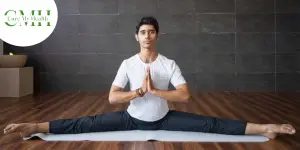
4. Kapalbhati Pranayama (Skull Shining Breath):
To practise Kapalbhati Pranayama, follow these steps:
- Sit comfortably in a cross-legged position with your back straight and shoulders relaxed.
- Take a few deep breaths to prepare yourself. Begin by taking a deep breath in through your nose.
- Exhale forcefully and quickly through your nose, contracting your abdominal muscles to push the air out of your lungs.
- Relax your abdominal muscles and allow the inhalation to occur passively.
- Repeat this process for 10-15 rounds, gradually increasing the speed of the exhalation.
- After completing the rounds, take a few deep breaths and relax.
Benefits of Kapalbhati Pranayama include:
- Cleanser and strengthens the respiratory system
- Helps to reduce stress, anxiety, and fatigue
- Boosts digestion and metabolism
- Enhances mental clarity and focus
- Increases energy and vitality
Caution: If you have any respiratory issues or medical conditions, consult your doctor before practising Kapalbhati Pranayama. It is also not recommended for pregnant women and individuals with high blood pressure or heart problems.
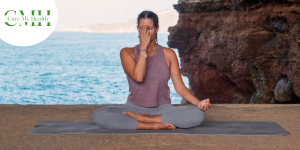
5. Sitali Pranayama (Cooling Breath):
Sitali Pranayama is a cooling breathing technique in yoga that is believed to help reduce body heat and promote relaxation. The name Sitali comes from the Sanskrit word ‘Sit’ meaning cool or soothing.
To practise Sitali Pranayama, follow these steps:
- Sit comfortably in a cross-legged position with your back straight and shoulders relaxed.
- Take a few deep breaths to prepare yourself.
- Curl your tongue into a tube shape, with the tip protruding slightly from your lips.
- Inhale slowly and deeply through your mouth, drawing the air in through the tube-shaped tongue.
- Once you have taken a full inhalation, withdraw your tongue from your mouth and close your mouth.
- Exhale slowly and steadily through your nose. Repeat this process for 5-10 rounds.
- If you are unable to curl your tongue, you can still practise Sitali Pranayama by pursing your lips and creating a small opening through which to draw in the air.
Benefits of Sitali Pranayama include:
- Cools and soothes the body and mind
- Helps to reduce stress, anxiety, and tension
- Improves digestion and metabolism
- Enhances mental clarity and focus
- Regulates blood pressure and heart rate
Caution: If you have any respiratory issues or medical conditions, consult your doctor before practicing Sitali Pranayama. It is also not recommended for individuals with low blood pressure or who are prone to feeling cold.
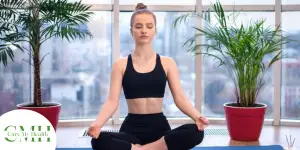
6. Sitkari Pranayama (Hissing Breath):
Sitkari Pranayama is a cooling breathing technique in yoga that involves inhaling through the teeth and exhaling through the nose. The name Sitkari comes from the Sanskrit word ‘Sit’ meaning cool or soothing.
To Practise Sitkari Pranayama, follow these steps:
- Sit comfortably in a cross-legged position with your back straight and shoulders relaxed.
- Take a few deep breaths to prepare yourself. Open your mouth slightly and place your tongue behind your upper front teeth.
- Inhale slowly and deeply through your teeth, creating a hissing sound.
- Once you have taken a full inhalation, close your mouth and exhale slowly and steadily through your nose.
- Repeat this process for 5-10 rounds.
- If you are unable to create a hissing sound, you can still practice Sitkari Pranayama by inhaling through your teeth and exhaling through your nose without making a sound.
Benefits of Sitkari Pranayama include:
- Cools and soothes the body and mind
- Helps to reduce stress, anxiety, and tension
- Improves digestion and metabolism
- Enhances mental clarity and focus
- Regulates blood pressure and heart rate
Caution: If you have any dental issues or medical conditions, consult your doctor before practising Sitkari Pranayama

7. Brahmari Pranayama (Bee Breath):
Brahmari Pranayama is a yogic breathing technique that involves producing a humming sound while breathing. “Brahmari” comes from the Sanskrit word “Brahma,” which means “the creator,” and “pranayama” means “breath control.”
To practise Brahmari Pranayama, follow these steps:
- Sit in a comfortable, upright position with your eyes closed.
- Place your thumbs on your ears and your remaining fingers lightly over your eyes, with your index fingers resting on your forehead and your remaining fingers on your cheeks.
- Take a deep breath in through your nose.As you exhale, make a humming sound by gently closing your throat and vocal cords. The sound should be similar to the buzzing of a bee. Continue to hum as you exhale all of the air out of your lungs.
- Inhale and repeat the process for several rounds.
Benefits of Bhramari Pranayama include reducing stress and anxiety, improving concentration and memory, reducing blood pressure, and calming the mind. It is also believed to be beneficial for the nervous system and can help to relieve tension in the face and neck.
8. Bhramari Pranayama(Humming Bee Breath):
Bhramari Pranayama is a yogic breathing technique that involves producing a humming sound while breathing, similar to Brahmari Pranayama. “Bhramari” comes from the Sanskrit word “bhramar,” which means “bee,” and “pranayama” means “breath control.”
To Practise Bhramari Pranayama, follow these steps:
- Sit in a comfortable, upright position with your eyes closed.
- Place your index fingers on your ears, your thumbs over your eyes, and the remaining three fingers on your cheeks.
- Take a deep breath in through your nose.
- As you exhale, make a humming sound by gently closing your throat and vocal cords. The sound should be similar to the buzzing of a bee.
- Continue to hum as you exhale all of the air out of your lungs.
- Inhale and repeat the process for several rounds.
Benefits of Bhramari Pranayama include reducing stress and anxiety, improving concentration and memory, reducing blood pressure, calming the mind, and promoting a sense of inner peace and tranquillity. It is also believed to be beneficial for the nervous system and can help to relieve tension in the face and neck. Additionally, Bhramari Pranayama is said to activate the chakras and promote spiritual awakening.
9. Anulom Vilom Pranayama (Alternate Nostril Breathing):
Anulom Vilom Pranayama is a yogic breathing technique that involves alternate nostril breathing, which is also known as Nadi Shodhana Pranayama. “Anulom” means “with the grain,” and “vilom” means “against the grain.” This pranayama technique is believed to balance the flow of energy through the body and promote overall health and well-being.
To practice Anulom Vilom Pranayama, follow these steps:
- Sit in a comfortable, upright position with your eyes closed.
- Place your left hand on your left knee with your palm facing up.
- Bring your right hand up to your nose, and use your thumb to close your right nostril.
- Inhale deeply through your left nostril.
- Use your ring finger or little finger to close your left nostril, and exhale through your right nostril.
- Inhale deeply through your right nostril.
- Use your thumb to close your right nostril, and exhale through your left nostril.
- This completes one cycle. Repeat for several rounds, alternating nostrils with each inhale and exhale.
Benefits of Anulom Vilom Pranayama include
- Improving lung function
- Reducing stress and anxiety
- Improving concentration and memory
- Balancing the nervous system
- Promoting a sense of calm and relaxation.
It is also believed to improve the flow of prana (life force energy) throughout the body, which can lead to improved physical, emotional, and spiritual well-being. Anulom Vilom Pranayama is a simple and effective technique that can be practised by people of all ages and fitness levels.
10. Sheetkari Pranayama (Cooling Breath):
Sheetkari Pranayama is a yogic breathing technique that involves inhaling through the mouth with a hissing sound, and exhaling through the nose. The word “Sheetkari” is derived from the Sanskrit word “Sheet” which means “cooling” or “soothing,” and “Kari” which means “maker.” Thus, Sheetkari Pranayama is also known as the Cooling Breath technique.
To practise Sheetkari Pranayama, follow these steps:
- Find a comfortable seated position with your back straight and your hands resting on your knees.
- Gently close your eyes and take a few deep breaths to relax.
- Open your mouth slightly, allowing your teeth to be slightly apart, and inhale through your mouth with a hissing sound, like the sound of air passing through a small gap.
- After inhaling fully, close your mouth and exhale slowly through your nose.
- Repeat this process for several rounds, starting with 5-10 rounds and gradually increasing as you become more comfortable with the technique.
Benefits of Sheetkari Pranayama include
- Cooling and soothing the body and mind
- Reducing stress, anxiety, and tension
- Improving digestion and reducing acidity in the stomach
- Relieving headaches and migraines
- Regulating blood pressure and reducing hypertension
- Promoting mental clarity and concentration.
11. Plavini Pranayama (Floating Breath):
Plavini Pranayama is a yogic breathing technique that involves inhaling and swallowing air, and then retaining it in the stomach for some time before exhaling. The word “Plavini” is derived from the Sanskrit word “Plava,” which means “to float.” This technique is also known as the Floating Breath technique.
To practise Plavini Pranayama, follow these steps:
- Find a comfortable seated position with your back straight and your hands resting on your knees.
- Take a few deep breaths to relax.
- Inhale deeply through your nose and fill your lungs with air.
- Swallow the air and retain it in your stomach for as long as you feel comfortable.
- When you’re ready to exhale, release the air through your nose slowly.
- Repeat this process for several rounds, starting with 5-10 rounds and gradually increasing as you become more comfortable with the technique.
It’s important to note that this technique should only be practiced under the guidance of a qualified yoga teacher. It’s not recommended for those with high blood pressure, heart problems, or any other medical condition that affects breathing.
Benefits of Plavini Pranayama include:
- Improving digestion and reducing acidity in the stomach
- Relieving constipation and other digestive problems
- Reducing bloating and gas
- Increasing lung capacity and improving respiratory health
- Promoting relaxation and reducing stress and anxiety
- Stimulating the vagus nerve, which can help regulate the nervous system and improve overall well-being.
12. Surya Bhedana Pranayama (Right Nostril Breathing)
Surya Bhedana Pranayama is a yogic breathing technique that involves inhaling through the right nostril while keeping the left nostril closed, and then exhaling through the left nostril while keeping the right nostril closed. The word “Surya” means “sun,” and “Bhedana” means “piercing.” This technique is also known as the Right Nostril Breathing technique.
To practise Surya Bhedana Pranayama, follow these steps:
- Find a comfortable seated position with your back straight and your hands resting on your knees.
- Take a few deep breaths to relax.
- Use your right thumb to close your right nostril and inhale deeply through your left nostril.
- After inhaling fully, use your right ring finger to close your left nostril and exhale through your right nostril.
- Repeat this process for several rounds, starting with 5-10 rounds and gradually increasing as you become more comfortable with the technique.
It’s important to note that this technique should only be practised under the guidance of a qualified yoga teacher. It’s not recommended for those with high blood pressure, heart problems, or any other medical condition that affects breathing.
Benefits of Surya Bhedana Pranayama include:
- Balancing the nervous system and calming the mind.
- Increasing energy and alertness.
- Improving concentration and mental focus.
- Regulating body temperature and reducing fever.
- Stimulating the digestive system and promoting better digestion.
- Clearing the nasal passages and improving respiratory health.
Conclusion
Pranayama is a yogic practice that involves controlling the breath for various physical and mental benefits. There are numerous types of pranayama, each with its specific techniques and benefits.
Research suggests that regular practice of pranayama may improve respiratory function, reduce stress and anxiety, lower blood pressure, improve digestion, and enhance cognitive function. However, it’s important to note that pranayama should be practised under the guidance of a qualified teacher, as it can be harmful if done incorrectly.
Overall, pranayama is a valuable tool for promoting physical and mental well-being, but it should be practised responsibly and with caution.



